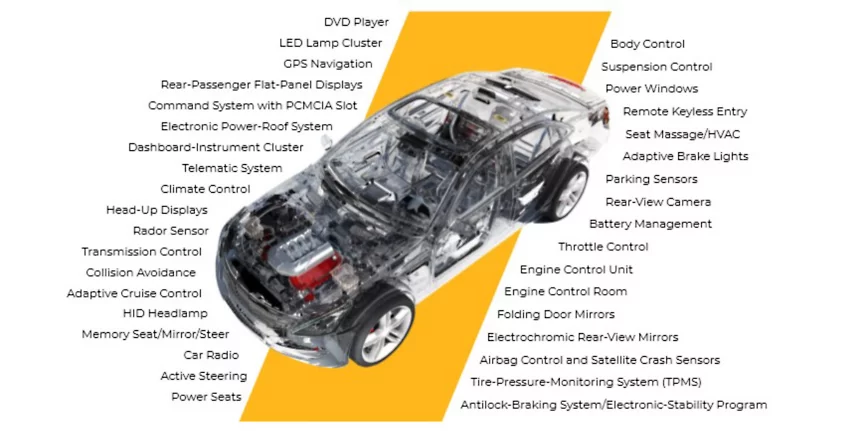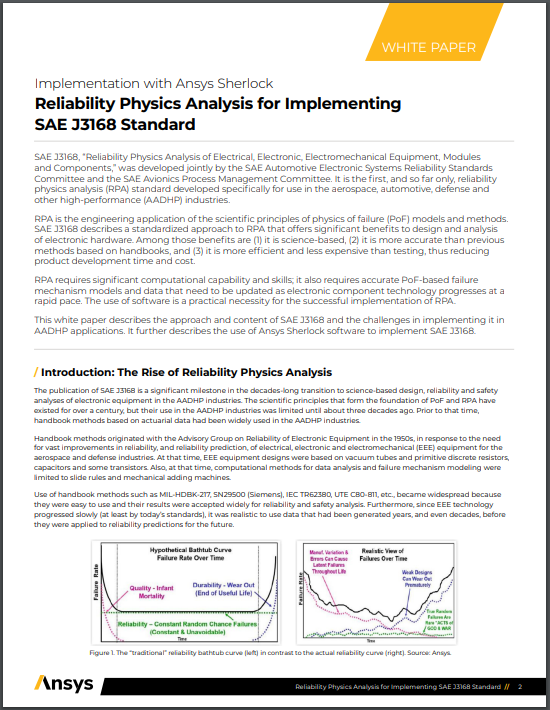Our technology is constantly evolving and adding new capabilities, and this is certainly true for Printed Circuit Boards (PCBs) in high grade electronic applications. Engineers must constantly consider the competing challenges of closer tolerances, better heat resistance, and superior reliability.
As discussed in Part 1, reliability physics analysis (RPA) tools have been developed which apply scientifically derived algorithms and simulation techniques to predict degradation and possible failure due to physical, chemical, mechanical, thermal or electrical mechanisms. All engineers involved in design and validation of PCBs and electronic systems can leverage RPA before committing to hardware prototyping.
However, inconsistent interpretation of key requirements has led to the development of SAE J3168 to formalize a consensus among users and document a set of standard methods to apply RPA to electrical, electronic and electromechanical (EEE) equipment, modules and components.
SAE J3168, “Reliability Physics Analysis of Electrical, Electronic, Electromechanical Equipment, Modules and Components,” was developed jointly by the SAE Automotive Electronic Systems Reliability Standards Committee and the SAE Avionics Process Management Committee. It is the first, and so far, only reliability physics analysis (RPA) standard developed specifically for use in the Aerospace, Automotive, Defence and other High-Performance (AADHP) industries. Read more about the standard here in this recent blog by Ansys: How the SAE J3168 Standard Will Improve Automotive Electronic Hardware | Ansys

Automotive electronics typically account for at least 35% of a modern automobile.
SAE J3168 is providing engineers with a standardized approach to RPA that offers significant benefits to design and analysis of electronic hardware. It is (1) science-based, (2) more accurate than previous methods based on handbooks, and (3) more efficient and less expensive than testing.
This reduces product development time and cost.
SAE J3168 describes a baseline process to assess board-level reliability and durability with respect to five major potential failure mechanisms:
- Solder joint fatigue due to thermal cycling
- Solder attachment fatigue due to mechanical vibration
- Solder joint failure due to mechanical shock
- Printed circuit board via hole fatigue due to thermal cycling
- Aging and wear-out of microcircuits due to electromigration, oxide breakdown, bias temperature instability and hot carrier injection

SAE J3168 is the first reliability physics analysis (RPA) standard developed specifically for use in the aerospace, automotive, defense and other high-performance (AADHP) industries.
The standard SAE J3168 is in “draft” and currently to be finalised. It will give engineers in automotive and aviation a set of easy to follow practices that are strongly aligned with methodologies and practices provided inside Ansys Sherlock. Click below to download the full White Paper on “Reliability Physics Analysis for Implementing SAE J3168 Standard – Implementation with Ansys Sherlock”.
Read our next blogs in this series on Electronics Reliability, where we share some examples on how to implement these procedures in our Reliability Physics Analysis (RPA) Tool for specific standards such as:
You can also learn more here about the range of Ansys engineering software design to assess Electronics Reliability supported by LEAP.



